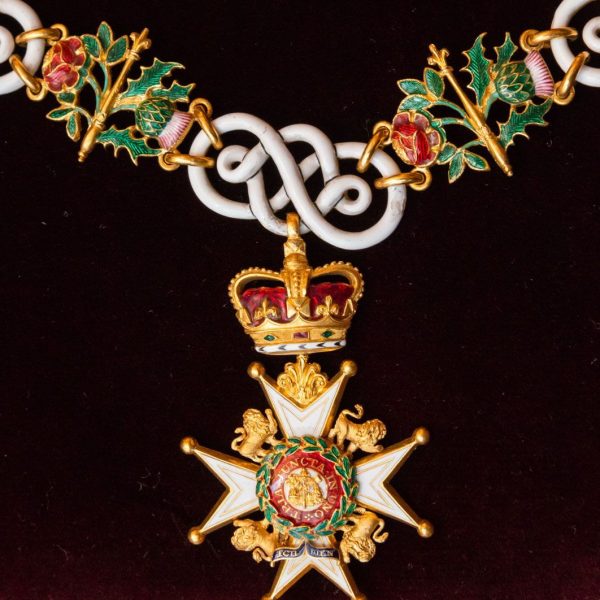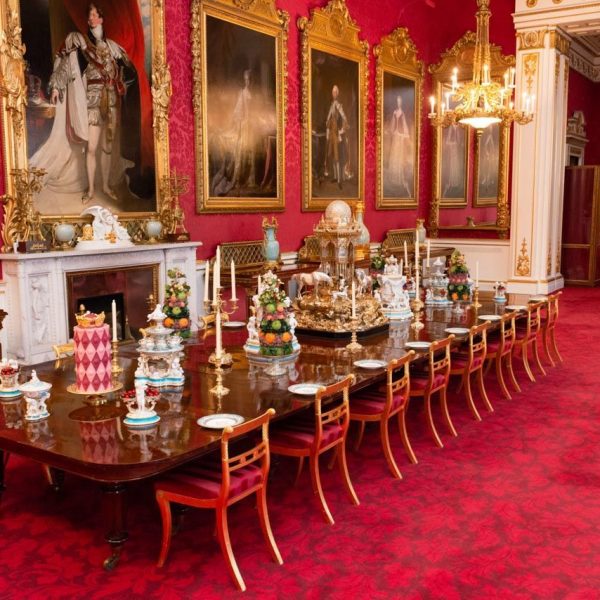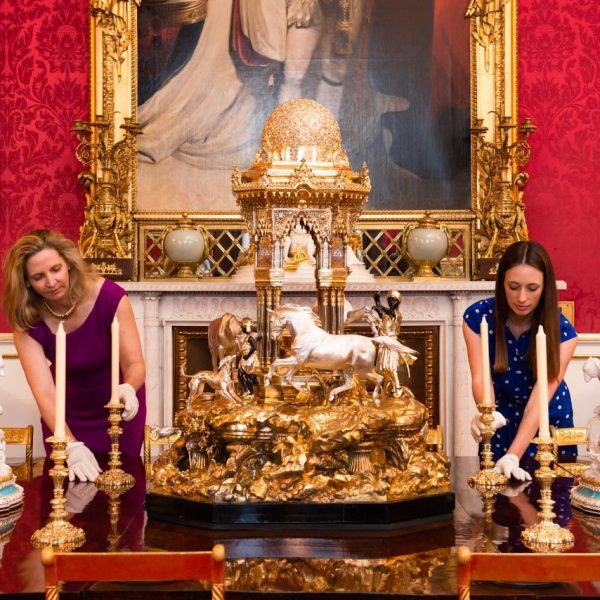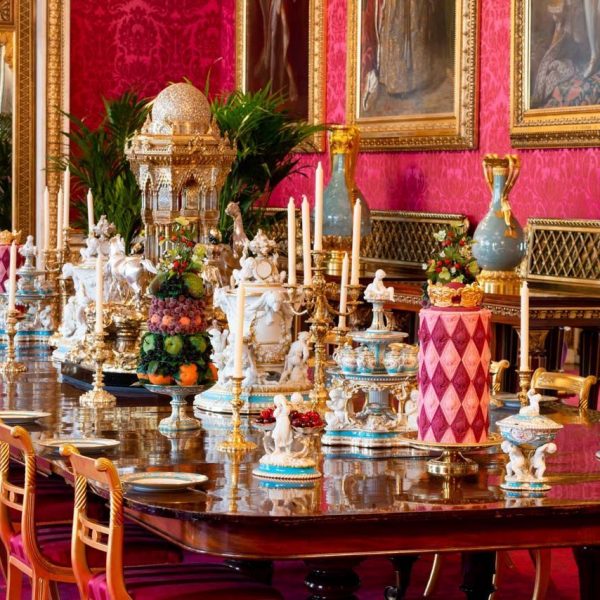
The music, dancing and entertaining that characterised the early part of Queen Victoria’s reign will be recreated through special effects and displays throughout the State Rooms at this year’s Summer Opening of Buckingham Palace from Saturday, 20 July.

Thomas Scully, Queen Victoria, 1837-39. Royal Collection Trust © Her Majesty Queen Elizabeth II 2019.
To mark the 200th anniversary of the birth of Queen Victoria (1819–1901), the exhibition Queen Victoria’s Palace tells the story of how the young monarch brought the Palace to life, transforming an empty royal residence into the most glittering court in Europe.
Queen Victoria ascended the throne on 20 June 1837, aged 18. She moved into Buckingham Palace within three weeks, becoming the first monarch to use it as an official royal residence. A year later, Victoria was also the first to process from the Palace to her Coronation at Westminster Abbey on 28 June 1838. Before sitting in the Coronation Chair to receive the orb, sceptre and ring, the symbols of royal authority, she was dressed in the supertunica, an embroidered robe made from cloth of gold. Victoria later recorded in her Journal that she would remember the day ‘as the proudest of my life’.

The Supertunica worn by Queen Victoria at her Coronation. Royal Collection Trust © Her Majesty Queen Elizabeth II 2019
On 10 February 1840 Victoria married her first cousin, Prince Albert of Saxe-Coburg and Gotha. Though Victoria was initially delighted with Buckingham Palace’s ‘high, pleasant and cheerful interiors’, the royal residence was unmodernised and unsuitable for both official and family life. Victoria was particularly frustrated by the lack of ‘a room capable of containing a larger number of those persons whom the Queen has to invite in the course of the season to balls, concerts etc.’ To address this, she commissioned the architect James Pennethorne to design a new annexe.

Franz Xaver Winterhalter, The Royal Family in 1846, 1846. Royal Collection Trust © Her Majesty Queen Elizabeth II 2019.
During their time together at Buckingham Palace, Queen Victoria and Prince Albert held three magnificent costume balls. The Stuart Ball of 13 July 1851 had as its theme the Restoration period, with guests dressed in the style of Charles II’s court. Queen Victoria’s costume for the Stuart Ball, designed by the artist Eugène Louis Lami, has a bodice and full skirt of grey moiré trimmed with gold lace and an underskirt of gold and silver brocade. The Queen wrote a detailed account of the occasion in her Journal and commented: ‘I was so proud and pleased to see my beloved Albert looking so handsome, truly royal and distinguished, and so much admired. I must say our costumes were beautifully made.’ She illustrated her Journal entry with a sketch of herself and Prince Albert with Prince Charles Leiningen (Victoria’s half-brother) in their Restoration outfits.

Queen Victoria’s costume for the Stuart Ball. Royal Collection Trust © Her Majesty Queen Elizabeth II 2019
The Palace’s new Ballroom and Ball Supper Room were completed in May 1856, and measuring 33.5 metres long and 18 metres wide, the Ballroom was the largest room in the Palace. On 17 June of that year, a Ball was held to mark the end of the Crimean War and honour the returning soldiers.

William Simpson, The Return of The Guards from The Crimea, Outside Buckingham Palace, 9 July, 1856, Jul 1856. Royal Collection Trust © Her Majesty Queen Elizabeth II 2019.
The Ball of 1856, recorded in a watercolour by Louis Haghe, has been recreated for visitors using a Victorian illusion technique known as Pepper’s Ghost and a series of digital projections around the Ballroom. Four couples appear performing the opening waltz to Italian composer Giuseppe Verdi’s La Traviata, while the original Italian Renaissance-inspired decoration of silk hangings and Raphael-inspired cartoons, devised by Prince Albert’s artistic advisor, Ludwig Grüner, is recreated on the walls of the room. In the adjoining Ball Supper Room, projections have returned the original ceiling decoration of exotic birds and gold stars against a rich blue background, allowing visitors to imagine both spaces as Victoria and Albert would have known them.
- The Ballroom, Buckingham Palace by Louis Haghe. Royal Collection Trust © Her Majesty Queen Elizabeth II 2019
- a Victorian illusion technique known as ‘Pepper’s Ghost’, Royal Collection Trust © Her Majesty Queen Elizabeth II 2019
New kitchens were also incorporated into Pennethorne’s plans, providing the Palace’s 45 chefs with the room and facilities to demonstrate the breadth of their culinary skills. In the State Dining Room, the table is dressed with items from the ‘Victoria’ pattern dessert service, purchased by the Queen from the stand of Minton & Co. at the Great Exhibition in 1851, and the Alhambra table fountain, a silver-gilt and enamel centrepiece commissioned by Victoria and Albert from R & S Garrard in the same year. On pieces of silver-gilt from the Grand Service, commissioned by Victoria’s uncle, George IV, sit replica desserts based on a design by Charles Elme Francatelli, Queen Victoria’s Chief Cook.
Visitors will also learn how Victoria made Buckingham Palace what it remains today – the headquarters of the Monarchy, a rallying point for national celebrations and a family home – and how she created traditions that still endure, including appearances by the Royal Family on the balcony at the front of the Palace and the annual summer Garden Parties.
為慶祝維多利亞女王誕辰200週年(1819-1901),今年夏季白金漢宮開放日中將通過特效和展示維多利亞女王時代早期的音樂,舞蹈和娛樂活動。展覽講述了這位年輕的君主如何打造出一座富有生命力的宮殿——將原本空曠的皇家住宅改造成歐洲最閃亮的宮廷。
維多利亞女王於1837年6月20日登基,18歲。她在三週內搬進了白金漢宮,成為第一位將其用作皇家官邸的君主。次年6月28日,君王的加冕儀式中維多利亞也是第一位從皇宮出發到加冕所在地威斯敏斯特大教堂。在加冕典禮時她穿著supertunica,一種由金布製成的刺繡長袍。維多利亞後來在她的日記中寫道,她會記得那天是“我生命中最驕傲的一天”。
1840年2月10日,維多利亞和她的表弟阿爾伯特王子成婚了。起初維多利亞對白金漢宮的“高,宜人和愉快的室內設計”感到滿意,但非現代化的陳設卻不適合官方用途和家庭生活。維多利亞特別感到沮喪的是,沒有一個房間舉辦大型的舞會和音樂會等等。為了解決這個問題,她委託建築師James Pennethorne來設計一個新的附件。
維多利亞女王和阿爾伯特親王在白金漢宮一共舉辦過三場尤為華麗的化裝舞會。 1851年7月13日的“斯圖爾特舞會”以復辟時期為主題,客人穿著查理二世的宮廷風格。維多利亞女王的服裝由藝術家Eugène Louis Lami設計——緊身胸衣,飾有金色蕾絲灰色莫爾的裙子和金銀色錦緞襯衫。
新的舞會廳和宴會廳於1856年5月完工,長33.5米,寬18米。同年6月17日,舉行了一場以紀念克里米亞戰爭的結束並慶祝士兵凱旋的舞會。在路易斯·哈格畫筆下的舞會,已經使用維多利亞時期的幻覺技術“佩珀的鬼魂”和一系列數字投影為遊客重現舞會的場景。
新的廚房也被納入Pennethorne的計劃中,為Palace的45位廚師提供了展示其烹飪技能廣度的房間和設施。在餐廳中,桌子上擺放著“維多利亞”圖案甜點裝飾物,以及阿罕布拉餐桌噴泉。展覽還根據維多利亞女王的首席廚師Charles Elme Francatelli的設計還原了當年的甜點。
參觀者還將了解維多利亞女王對白金漢宮的影響 – 君主制的總部,全國慶典的中心和皇室住宅 – 以及她如何創造沿襲至今的傳統,包括皇室家族成員在宮殿前的觀景台露面,和一年一度的夏季花園派對。
Edited x Translated by Qiwen Ke
編輯 x 翻譯:柯淇雯


















